
Portelet Bay: Jersey's Hidden Gem
Discover the tranquility and beauty of Portelet Bay in Jersey, a secluded beach with golden sands, crystal-clear waters, and rich history. Perfect for relaxation and exploration.
Portelet Bay is a serene and secluded beach located on the south coast of Jersey, offering visitors a perfect blend of natural beauty and peaceful surroundings. Nestled between dramatic cliffs and accessible by a series of steps, this hidden gem provides an idyllic escape from the hustle and bustle of everyday life. The bay is renowned for its golden sands and crystal-clear waters, making it an ideal spot for sunbathing, swimming, and snorkeling. A prominent feature of Portelet Bay is the small tidal island known as Janvrin's Tomb, named after Philippe Janvrin, a sea captain who was buried there in the 18th century. During low tide, visitors can walk across the sandy causeway to explore the island and enjoy panoramic views of the bay and beyond. The natural beauty and historical significance of Portelet Bay make it a unique destination that appeals to both nature lovers and history enthusiasts. For those who prefer a more active experience, the bay is surrounded by scenic walking trails that offer stunning coastal views and opportunities to discover Jersey's diverse flora and fauna. After a day of exploration, visitors can unwind at the nearby Portelet Bay Café, which serves a variety of delicious local dishes and refreshments. Whether you are looking for relaxation or adventure, Portelet Bay promises an unforgettable experience in one of Jersey's most picturesque locations.
Local tips in Portelet Bay
- Visit during low tide to walk across to Janvrin's Tomb and enjoy the panoramic views.
- Wear comfortable shoes for the descent and ascent of the steep steps leading to the bay.
- Carry some water and snacks as there are limited facilities at the bay itself.
- Check the tide times before planning your visit to make the most of the beach and tidal island.
- Explore the nearby walking trails for stunning coastal views and a closer look at local wildlife.
- Stop by the Portelet Bay Café for a taste of delicious local cuisine after your beach visit.
Portelet Bay: Jersey's Hidden Gem
Portelet Bay is a serene and secluded beach located on the south coast of Jersey, offering visitors a perfect blend of natural beauty and peaceful surroundings. Nestled between dramatic cliffs and accessible by a series of steps, this hidden gem provides an idyllic escape from the hustle and bustle of everyday life. The bay is renowned for its golden sands and crystal-clear waters, making it an ideal spot for sunbathing, swimming, and snorkeling. A prominent feature of Portelet Bay is the small tidal island known as Janvrin's Tomb, named after Philippe Janvrin, a sea captain who was buried there in the 18th century. During low tide, visitors can walk across the sandy causeway to explore the island and enjoy panoramic views of the bay and beyond. The natural beauty and historical significance of Portelet Bay make it a unique destination that appeals to both nature lovers and history enthusiasts. For those who prefer a more active experience, the bay is surrounded by scenic walking trails that offer stunning coastal views and opportunities to discover Jersey's diverse flora and fauna. After a day of exploration, visitors can unwind at the nearby Portelet Bay Café, which serves a variety of delicious local dishes and refreshments. Whether you are looking for relaxation or adventure, Portelet Bay promises an unforgettable experience in one of Jersey's most picturesque locations.
When is the best time to go to Portelet Bay?
Iconic landmarks you can’t miss
Jersey War Tunnels
Explore the poignant stories of Jersey's wartime history at the Jersey War Tunnels, a captivating museum experience for every traveler.

Mont Orgueil Castle
Discover the majestic Mont Orgueil Castle, a historical gem in Jersey offering stunning views and a glimpse into the island's rich heritage.
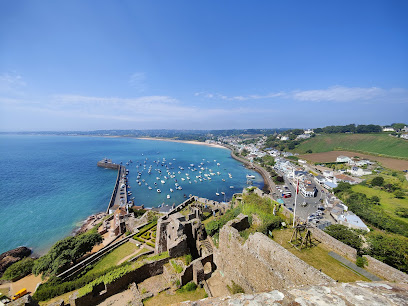
Elizabeth Castle
Explore the rich history and stunning views at Elizabeth Castle, a majestic fortress in St Aubin's Bay, Jersey, perfect for history enthusiasts and nature lovers alike.

St Brelade's Bay
Experience the idyllic charm of St Brelade's Bay, a stunning beach destination in Jersey known for its soft sands and crystal-clear waters.
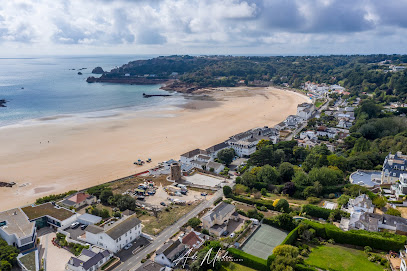
Howard Davis Park
Discover the serene beauty of Howard Davis Park, a lush green haven in Jersey perfect for relaxation, picnics, and family fun amidst stunning landscapes.
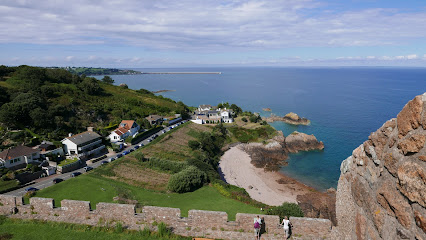
La Hougue Bie Museum
Uncover the Neolithic treasures and rich history of Jersey at La Hougue Bie Museum, a captivating local history destination.
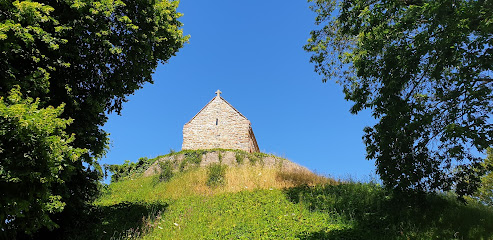
Plémont Beach
Explore the breathtaking Plémont Beach in Jersey, a serene coastal escape with golden sands, stunning cliffs, and peaceful waters perfect for relaxation and exploration.
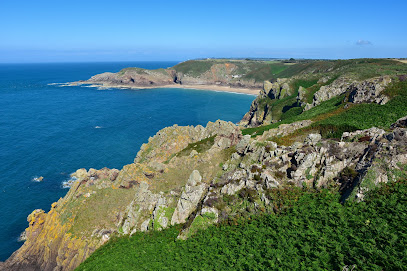
Grosnez Castle
Discover Grosnez Castle: a stunning historical site in Jersey with breathtaking coastal views and rich medieval heritage.
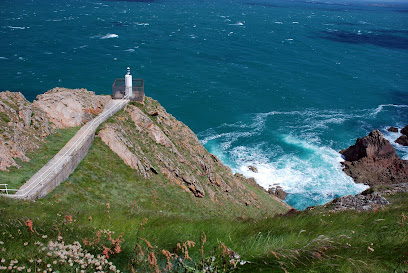
Corbiere Phare
Discover Corbiere Phare, a charming restaurant in Jersey offering stunning views of the lighthouse and delicious local cuisine in a warm atmosphere.
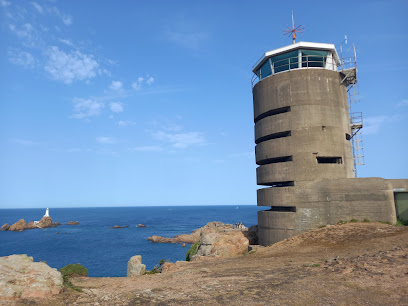
La Corbière
Explore the breathtaking beauty of La Corbière, Jersey's iconic lighthouse and coastal attraction, where stunning views and natural wonders await.
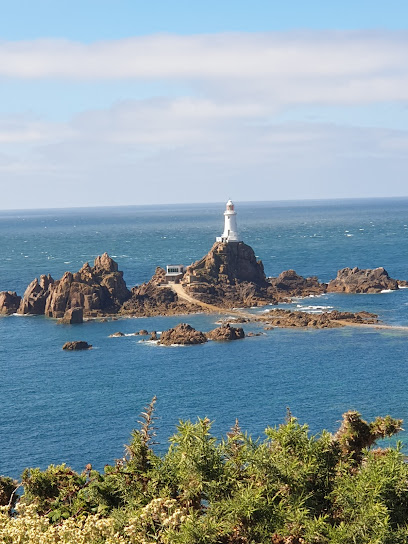
Noirmont
Explore Noirmont Park: Jersey's verdant gem offering stunning coastal views and tranquil gardens, perfect for relaxation and exploration.
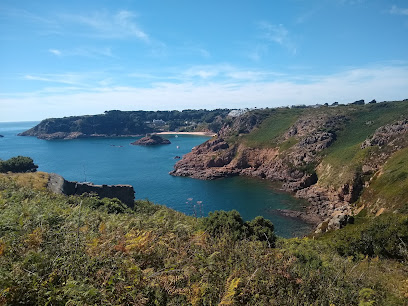
Liberation Square
Discover Liberation Square in St. Helier, Jersey – a beautiful tribute to freedom and resilience, surrounded by gardens and local culture.
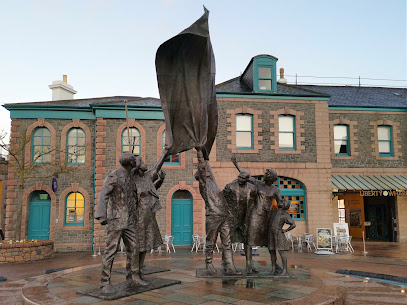
Devil's Hole Viewing Platform
Discover the stunning views and natural beauty at Devil's Hole Viewing Platform, a scenic must-see in Jersey, perfect for nature lovers and photographers.
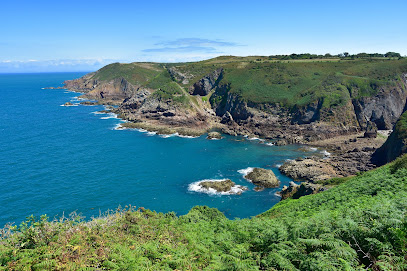
Jersey Lavender Ltd
Discover the enchanting beauty and aromatic delights of Jersey Lavender Ltd, a serene haven with stunning fields, a cozy café, and local handcrafted products.
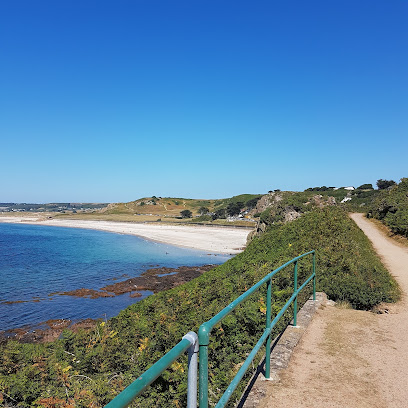
Channel Islands Military Museum
Discover the Channel Islands Military Museum, where the stories of bravery and resilience come alive through captivating exhibits and artifacts.
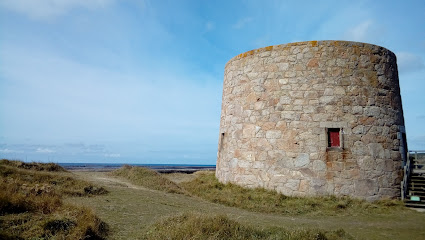
Unmissable attractions to see
Les Jardins de la Mer
Experience the serene beauty of Les Jardins de la Mer, a coastal garden in St Helier, Jersey, showcasing diverse flora and stunning sea views.

Maritime Museum & Occupation Tapestry Gallery
Explore Jersey's maritime history and the captivating Occupation Tapestry at the Maritime Museum & Occupation Tapestry Gallery in St. Helier.
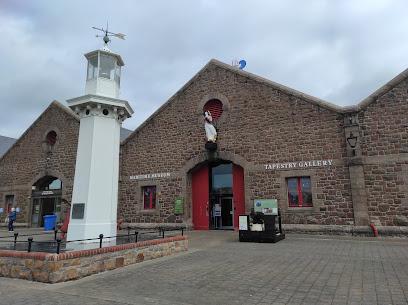
La Hougue Bie Museum
Explore the ancient history and archaeological marvels of Jersey at La Hougue Bie Museum, a captivating local history museum.

Grosnez Castle
Explore the ancient ruins of Grosnez Castle, a historic gem in Jersey offering stunning coastal views and rich medieval history.
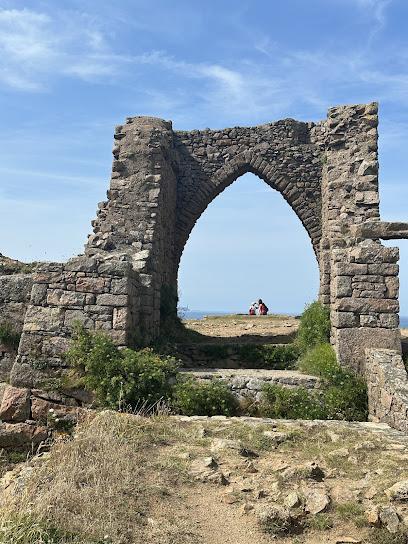
Hamptonne Country Life Museum
Explore Jersey's rural heritage at Hamptonne Country Life Museum, a charming historical site showcasing the island's agricultural past.

WWII Gun Emplacement
Discover Jersey's WWII Gun Emplacement, a historical landmark offering breathtaking views and a glimpse into the island's wartime past.
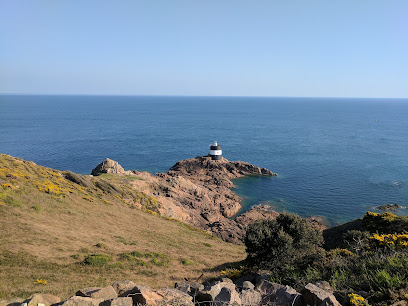
Portlet Tower
Experience the rich history and breathtaking views at Portlet Tower, an iconic landmark in Jersey, perfect for history buffs and nature lovers alike.
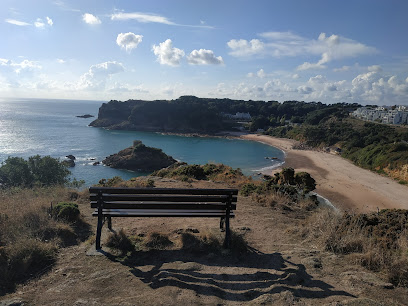
Le Coleron Battery
Explore the historic Le Coleron Battery in Jersey, a coastal fortification offering panoramic views and a glimpse into the island's military past.
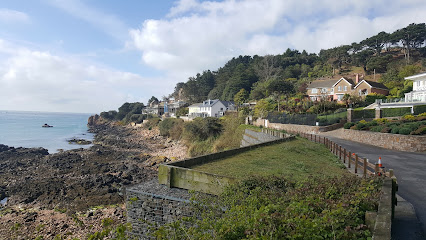
Essential places to dine
El Tico
Discover El Tico in Jersey: A beachfront dining destination offering fresh local cuisine and stunning coastal views.
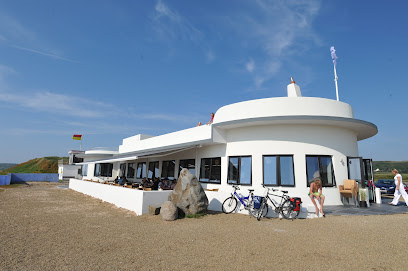
The Portelet Inn - Randalls Pubs
Experience family-friendly dining at The Portelet Inn with stunning bay views and delicious local cuisine in Jersey.

The Hungry Man
Experience the best fast food at The Hungry Man in Rozel - savor crab sandwiches and burgers in a cozy atmosphere.
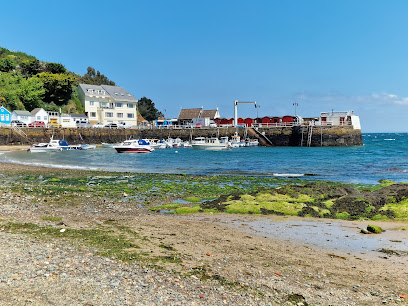
The Boat House
Discover The Boat House: Where exquisite cuisine meets stunning waterfront views in St Aubin.
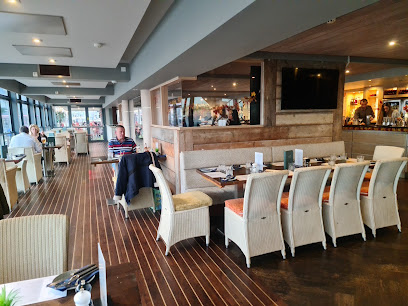
Quayside Bistro & Grill
Experience exquisite seafood and breathtaking views at Quayside Bistro & Grill in St Helier – the perfect dining destination on Jersey's coast.
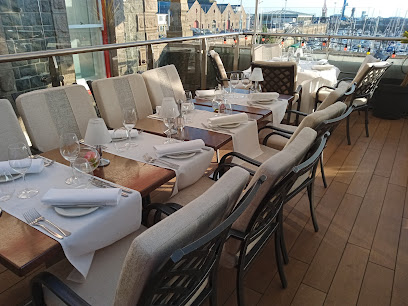
The Tenby - Randalls Pubs
Discover the perfect blend of tradition and taste at The Tenby - Randalls Pubs with stunning views over St Aubin's Bay.
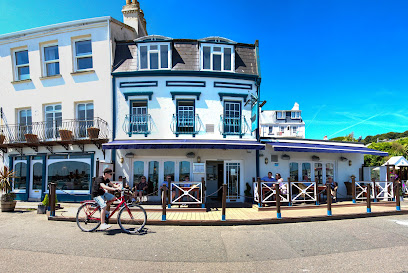
The Old Court House
Discover culinary excellence at The Old Court House in St. Aubin, Jersey - where local flavors meet stunning coastal views.
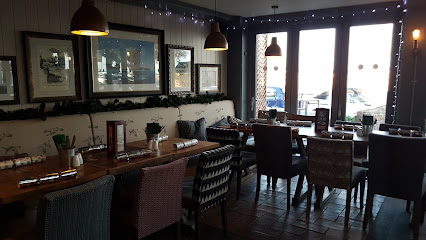
Old Smugglers Inn
Discover Old Smugglers Inn: A charming pub in Jersey offering delicious local cuisine and a warm atmosphere perfect for every traveler.
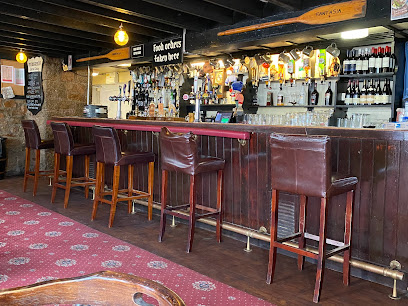
The Lookout Beach Cafe & Restaurant
Experience delicious local cuisine with stunning coastal views at The Lookout Beach Cafe & Restaurant in Jersey.
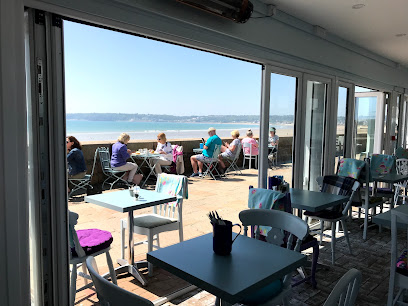
Corbiere Phare
Explore Corbiere Phare: A picturesque lighthouse offering breathtaking views and rich maritime history on Jersey's stunning coastline.
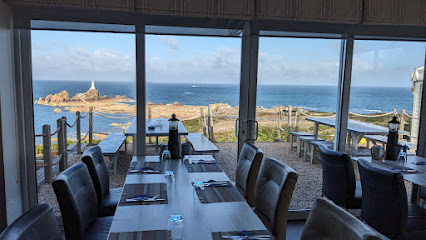
Mark Jordan at the Beach
Experience exquisite British seafood dining at Mark Jordan at the Beach in Jersey—where fresh flavors meet breathtaking coastal views.

Oyster Box
Discover Oyster Box in St Brelade's Bay - where exquisite seafood meets stunning coastal views for an unforgettable dining experience.
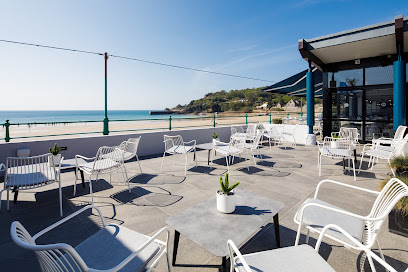
Roseville Bistro
Discover culinary excellence at Roseville Bistro - your premier seafood destination in St Helier with exquisite dishes and vibrant atmosphere.
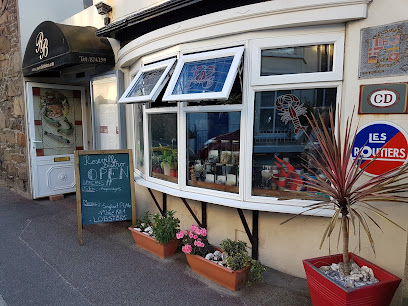
The Salty Dog - Cafe, Bar & Bistro
Experience exquisite dining at The Salty Dog in Jersey - where local flavors meet stunning coastal views.
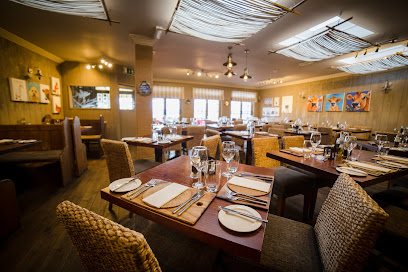
De L'Etang Greek Taverna & Accommodation
Savor authentic Greek cuisine at De L'Etang Taverna in St Helier – where every dish tells a story and hospitality shines.

Markets, malls and hidden boutiques
St Brelade's Bay
Discover the idyllic St Brelade's Bay, where golden sands meet turquoise waters, creating a perfect beach getaway in Jersey.
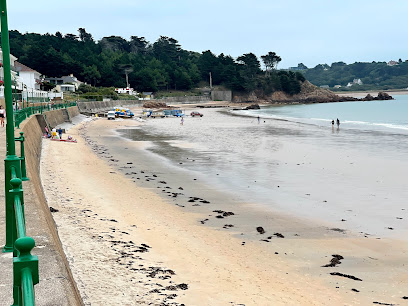
Jersey Pearl
Explore Jersey Pearl, where exquisite jewelry meets cultural heritage, offering a unique shopping experience and delightful café in a stunning setting.
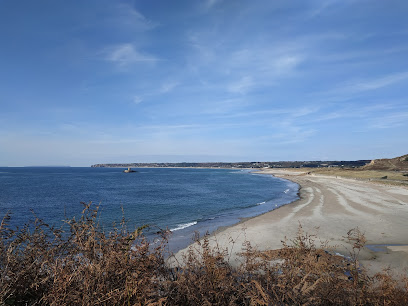
The Kiosk
Discover The Kiosk in Jersey, where delicious takeout meets stunning coastal views. Enjoy burgers, coffee, and ice cream in a welcoming atmosphere.
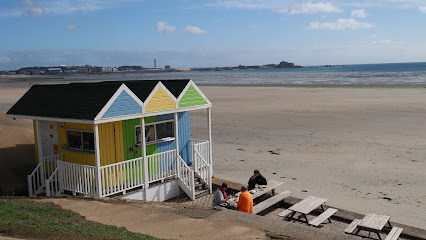
The Portelet Inn - Randalls Pubs
Experience the charm of Jersey at The Portelet Inn, a family-friendly pub offering stunning views and delightful local cuisine.
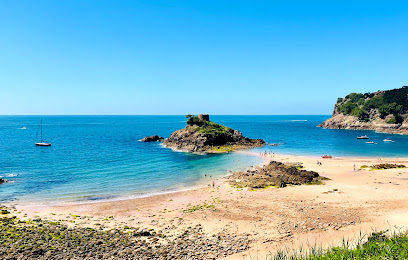
Corbiere Phare
Explore the stunning Corbiere Phare lighthouse in Jersey, where breathtaking views meet delightful dining experiences.
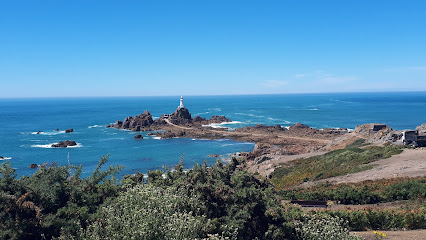
Oyster Box
Experience the freshest seafood in a stunning beachfront setting at Oyster Box, Jersey's premier seafood restaurant.
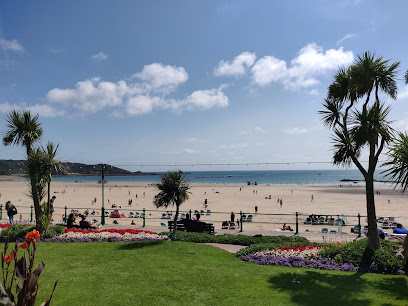
Liberty Wharf Shopping Centre
Discover Liberty Wharf Shopping Centre: a vibrant shopping haven in St Helier, Jersey, offering boutique shops, waterfront dining, and a unique cultural experience.
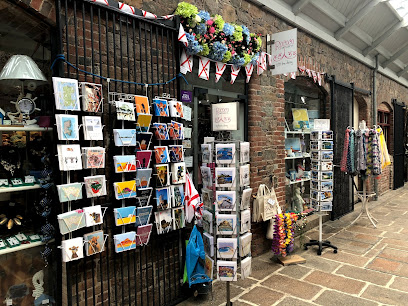
Liberation Square
Discover the vibrant heart of St Helier at Liberation Square, where shopping, dining, and culture come together in a picturesque pedestrian zone.
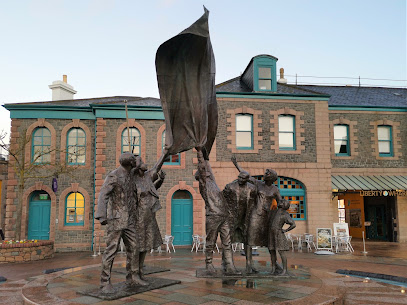
Jersey Lavender Ltd
Discover the enchanting beauty of Jersey Lavender Ltd, where fragrant fields and delightful treats await every visitor.
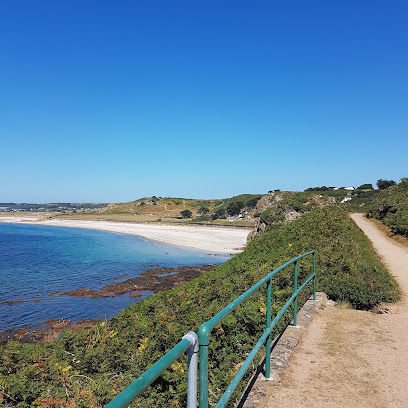
Lakeys Bike Hire Jersey
Discover the beauty of Jersey on two wheels with Lakeys Bike Hire, offering quality bicycles for an unforgettable island experience.
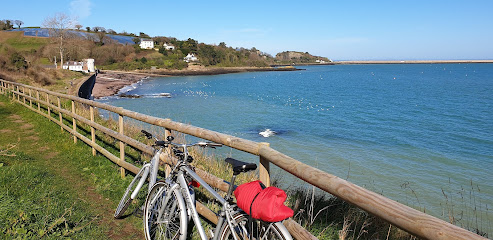
Kismet Cabana - Beach Club, Cafe & Restaurant
Discover Kismet Cabana: a vibrant beach club in Jersey offering delectable cuisine, refreshing drinks, and breathtaking ocean views perfect for your seaside escape.
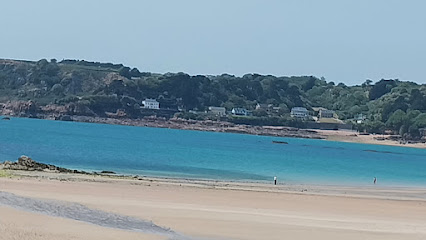
Portelet Beach
Experience the tranquil beauty of Portelet Beach in Jersey, where golden sands meet stunning coastal views, perfect for relaxation and adventure.
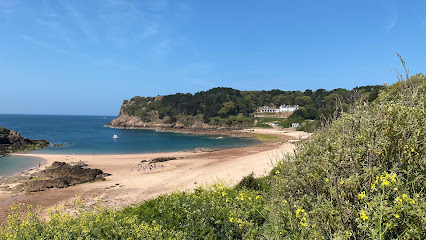
Portelet Bay Cafe
Discover the perfect seaside dining experience at Portelet Bay Cafe, where delicious pizza meets breathtaking views.
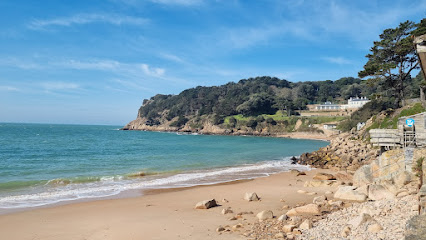
The Harbour Gallery
Explore The Harbour Gallery in St Helier, Jersey, where art meets creativity in a vibrant local setting.
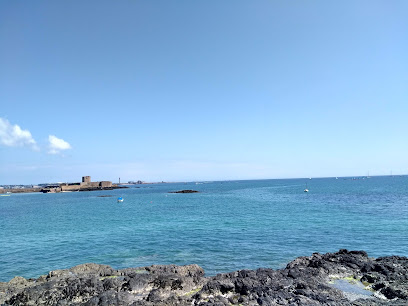
Reg's Award Winning Gardens
Explore the tranquil beauty of Reg's Award Winning Gardens in Jersey, a perfect escape for nature lovers and families with vibrant flora and serene landscapes.
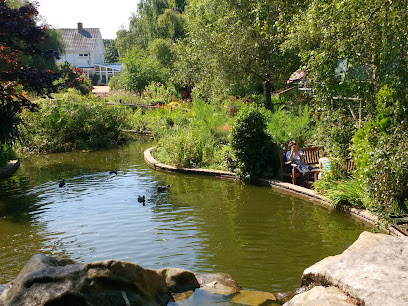
Essential bars & hidden hideouts
The Cock & Bottle
Experience the vibrant atmosphere and delectable dishes at The Cock & Bottle, a premier gastropub in St. Helier, Jersey.
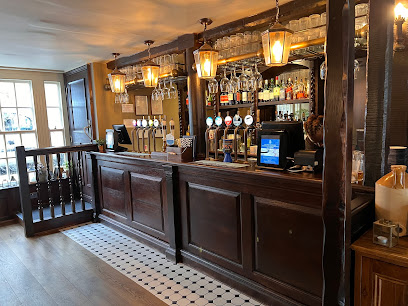
The Portelet Inn - Randalls Pubs
Experience the charm of The Portelet Inn, a family-friendly pub overlooking the breathtaking Portelet Bay in Jersey, offering delicious food and stunning views.
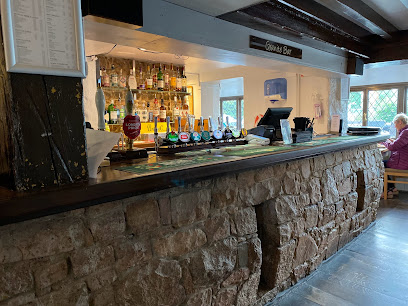
The Boat House
Discover a culinary oasis at The Boat House, where stunning waterfront views meet delicious dining in St Aubin.
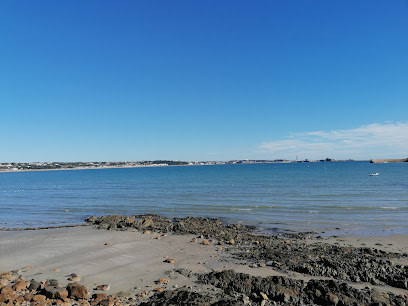
The Tenby - Randalls Pubs
Discover the charm of The Tenby Pub in St Aubin, where great food meets stunning coastal views.
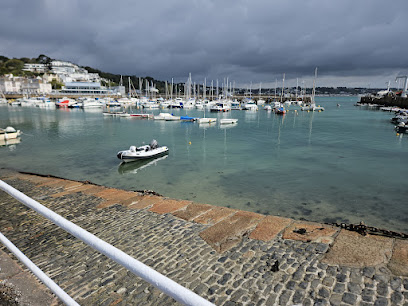
The Old Court House
Experience culinary delights at The Old Court House, a charming gastropub and hotel in St Aubin, Jersey, where local flavors meet stunning views.
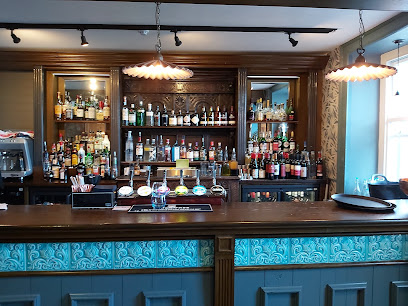
The Priory Inn Devils Hole
Discover the flavors of Jersey at The Priory Inn, where local ingredients meet a vibrant dining atmosphere in the heart of the island.
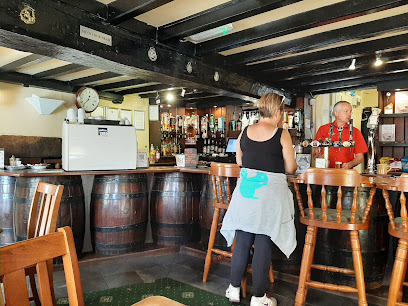
Old Smugglers Inn
Discover Old Smugglers Inn: A charming pub in Jersey, offering local cuisine, stunning views, and a welcoming atmosphere for all visitors.
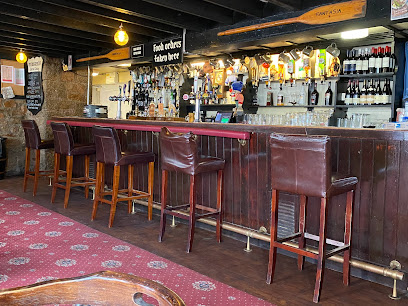
Blue Note Bar
Discover the heart of St Helier's nightlife at Blue Note Bar, a lively venue for live music and a great selection of drinks.
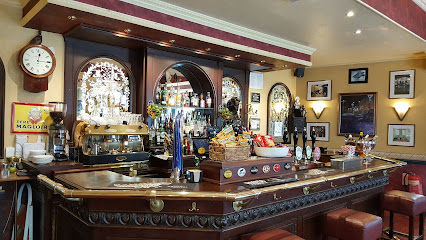
Oyster Box
Experience the freshest seafood with stunning coastal views at The Oyster Box, a must-visit culinary treasure in Jersey.
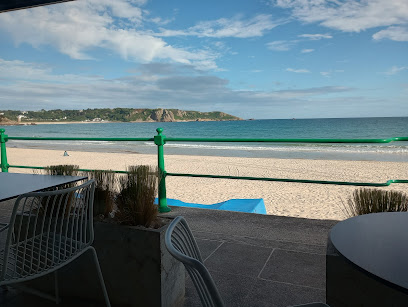
Le Moulin de Lecq
Experience the finest local cuisine at Le Moulin de Lecq, a charming restaurant and pub on Jersey's breathtaking coastline.
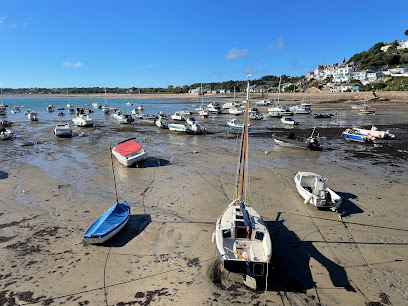
The Salty Dog - Cafe, Bar & Bistro
Experience the best of Jersey's culinary delights at The Salty Dog - Cafe, Bar & Bistro, where fresh ingredients meet creative flair.
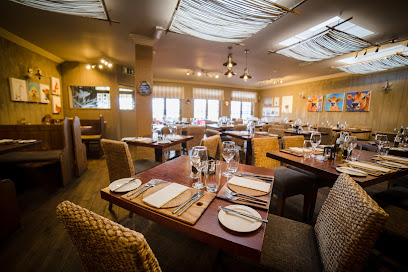
Kismet Cabana - Beach Club, Cafe & Restaurant
Discover a beachside dining experience at Kismet Cabana in Jersey, where sun, sea, and scrumptious food come together.
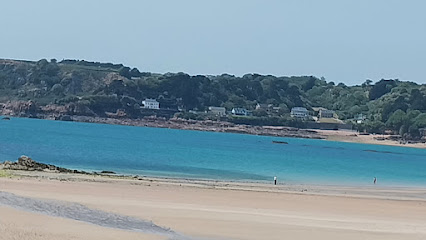
The Sir George Carteret - Randalls Pubs
Discover the charm of The Sir George Carteret, a delightful Jersey pub offering great food, local brews, and warm hospitality in a vibrant setting.
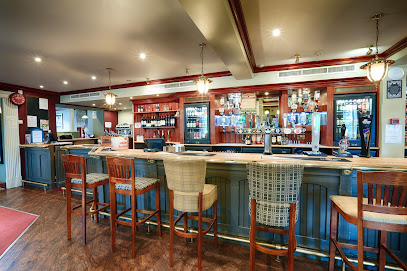
Kitty O'Shea's - Randalls Pubs
Discover Jersey's vibrant pub culture at Kitty O'Shea's, a local favorite for drinks, food, and unforgettable moments.
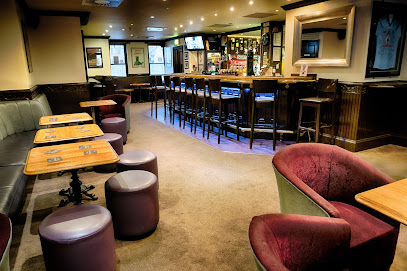
Portelet Bay Cafe
Experience the best of coastal dining at Portelet Bay Cafe, where delicious pizzas meet breathtaking sea views in a welcoming atmosphere.
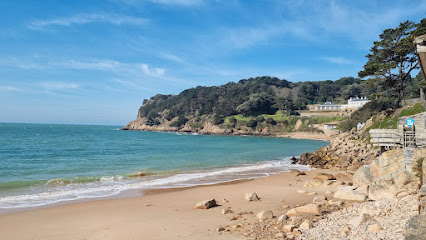
Local Phrases about Portelet Bay
-
- HelloBonjour
[bon-zhoor] - GoodbyeAu revoir
[oh reh-vwahr] - YesOui
[wee] - NoNon
[nohn] - Please/You're welcomeS'il vous plaît/De rien
[seel voo pleh/duh ryehn] - Thank youMerci
[mehr-see] - Excuse me/SorryExcusez-moi/Désolé
[ehk-skew-zay mwa/deh-zoh-lay] - How are you?Comment ça va?
[koh-mohn sah vah] - Fine. And you?Bien. Et vous?
[byehn. ay voo] - Do you speak English?Parlez-vous anglais?
[par-lay voo ahn-glay] - I don't understandJe ne comprends pas
[zhuh nuh kohm-prahnd pah]
- HelloBonjour
-
- I'd like to see the menu, pleaseJe voudrais voir le menu, s'il vous plaît
[zhuh voo-dray vwahr luh muh-nyuh, seel voo pleh] - I don't eat meatJe ne mange pas de viande
[zhuh nuh mahnj pah duh vyahnd] - Cheers!Santé!
[sahn-tay] - I would like to pay, pleaseJe voudrais payer, s'il vous plaît
[zhuh voo-dray pay-ay, seel voo pleh]
- I'd like to see the menu, pleaseJe voudrais voir le menu, s'il vous plaît
-
- Help!Au secours!
[oh sek-oor] - Go away!Allez-vous en!
[ah-lay vooz ahn] - Call the Police!Appelez la police!
[ah-peh-lay lah poh-leece] - Call a doctor!Appelez un médecin!
[ah-peh-lay uh meh-deh-sahn] - I'm lostJe suis perdu
[zhuh swee pehr-doo] - I'm illJe suis malade
[zhuh swee mah-lahd]
- Help!Au secours!
-
- I'd like to buy...Je voudrais acheter...
[zhuh voo-dray zah-shey...] - I'm just lookingJe regarde juste
[zhuh ruh-gahrd zhew-st] - How much is it?Combien ça coûte?
[kohm-byen sah koot] - That's too expensiveC'est trop cher
[say tro sher] - Can you lower the price?Pouvez-vous baisser le prix?
[poo-vay voo beh-say luh pree]
- I'd like to buy...Je voudrais acheter...
-
- What time is it?Quelle heure est-il?
[kehl uhr eh-teel] - It's one o'clockIl est une heure
[eel eh tun uhr] - Half past (10)Dix heures et demi
[dees uhr eh dehm-ee] - MorningMatin
[mah-tahn] - AfternoonAprès-midi
[ah-pray mee-dee] - EveningSoir
[swah] - YesterdayHier
[yehr] - TodayAujourd'hui
[oh-zhoor-dwee] - TomorrowDemain
[duh-mahn] - 1Un
[uhn] - 2Deux
[duh] - 3Trois
[twah] - 4Quatre
[kat] - 5Cinq
[sank] - 6Six
[sees] - 7Sept
[seht] - 8Huit
[weet] - 9Neuf
[nuhf] - 10Dix
[dees]
- What time is it?Quelle heure est-il?
-
- Where's a/the...?Où est...?
[ooh eh...] - What's the address?Quelle est l'adresse?
[kehl eh lahd-rehs] - Can you show me (on the map)?Pouvez-vous me montrer (sur la carte)?
[poo-vay voo muh mohn-tray (soor lah kart)] - When's the next (bus)?Quand est le prochain (bus)?
[kahnd eh luh proh-shahn (boos)] - A ticket (to ....)Un billet (pour ...)
[uhn bee-yay (poor)]
- Where's a/the...?Où est...?
History of Portelet Bay
-
Portelet Bay's history stretches back to ancient times when it was frequented by early settlers. Archaeological finds in the area suggest that humans have been living and thriving here since the Neolithic period. The bay's strategic location and natural resources made it an attractive spot for early communities.
-
During the medieval period, Jersey was often under threat from invading forces. To bolster defenses, a Martello tower was constructed on the small islet within Portelet Bay, known as Ile au Guerdain. This tower, built during the early 19th century, was part of a network of fortifications designed to protect the island from French attacks.
-
In the 16th century, Jersey was not spared from the Black Death. A poignant reminder of this period is the Plague House, located near Portelet Bay. It was here that victims of the plague were quarantined in an effort to curb the spread of the disease. The house stands as a testament to the resilience and struggles of the local population during this dark chapter.
-
The treacherous waters around Portelet Bay have seen numerous shipwrecks, especially in the 19th century. One of the most notable was the wreck of the 'Romano' in 1841, which led to significant loss of life. The bay's rocky coastline and unpredictable tides have made it a perilous area for sailors throughout history.
-
During World War II, Jersey, including Portelet Bay, was occupied by German forces. The bay and its surroundings were fortified with bunkers and other military installations as part of the Atlantic Wall. The remnants of these fortifications can still be seen today, offering a glimpse into the island's wartime past.
-
After World War II, Portelet Bay saw a transformation as it became a popular tourist destination. The natural beauty of the bay, with its golden sands and clear waters, attracted visitors from far and wide. The local government invested in infrastructure to support tourism, helping to shape the bay into the beloved holiday spot it is today.
Portelet Bay Essentials
-
Portelet Bay is located on the southwestern coast of Jersey, one of the Channel Islands. The easiest way to reach Jersey is by flying into Jersey Airport (JER), which has regular flights from several major cities in the UK and mainland Europe. From the airport, you can take a taxi or rent a car to reach Portelet Bay, which is approximately a 15-minute drive. Alternatively, ferries operate from the UK and France to St. Helier, Jersey's capital, from where you can take a taxi or bus to Portelet Bay.
-
While Portelet Bay itself is best explored on foot, transportation options in Jersey include buses, taxis, and car rentals. The local bus service (LibertyBus) is reliable and covers most parts of the island, including a route to Portelet Bay. Taxis are available but can be expensive. Renting a car is a convenient option if you plan to explore other parts of Jersey. Biking is also popular, with many scenic routes available around the island.
-
The official currency in Jersey is the British Pound (GBP), although Jersey issues its own banknotes and coins. Credit and debit cards are widely accepted in hotels, restaurants, and shops. ATMs are available in St. Helier and other major areas. It is advisable to carry some cash for smaller establishments and markets that may not accept cards.
-
Portelet Bay is generally a safe destination for tourists, with low crime rates. However, standard precautions should be taken. Avoid leaving personal belongings unattended, especially on the beach. There are no specific high-crime areas targeting tourists, but it is always best to stay vigilant, particularly at night and in crowded places.
-
In case of emergency, dial 999 for immediate assistance. Jersey has well-equipped medical facilities, with the General Hospital located in St. Helier. It is recommended to have travel insurance that covers medical emergencies. For minor health issues, there are pharmacies available in St. Helier and other parts of the island.
-
Fashion: Do wear comfortable clothing and shoes suitable for beach activities and hiking. Don't wear overly revealing swimwear outside of the beach area. Religion: Do respect local customs and traditions. When visiting churches, dress modestly and keep noise to a minimum. Public Transport: Do have exact change or a contactless card for bus fares. Don't eat or drink on public transport. Greetings: Do greet people with a friendly 'hello' or 'good morning.' A handshake is customary in more formal settings. Eating & Drinking: Do try local delicacies such as Jersey Royal potatoes and fresh seafood. Don't refuse hospitality, as it is considered impolite.
-
To experience Portelet Bay like a local, consider visiting during the shoulder seasons (spring and autumn) when the weather is pleasant, and the area is less crowded. Take a walk along the coastal paths for stunning views and a chance to see local wildlife. Engage with locals at nearby pubs and cafes to learn more about the area's history and culture. Don't miss the opportunity to explore nearby attractions such as the Noirmont Point and the Portelet Tower, which offer fascinating insights into Jersey's past.
Trending Landmarks in Portelet Bay
Nearby Cities to Portelet Bay
-
Things To Do in St. Brelade
-
Things To Do in St. Peter
-
Things To Do in St. Helier
-
Things To Do in St. Lawrence
-
Things To Do in St. Ouen
-
Things To Do in St. Clement
-
Things To Do in Trinity
-
Things To Do in Gorey
-
Things To Do in St. Anne
-
Things To Do in St. Martin
-
Things To Do in St. Peter Port
-
Things To Do in Forest
-
Things To Do in St. Andrew
-
Things To Do in St. Sampson
-
Things To Do in St. Saviour








